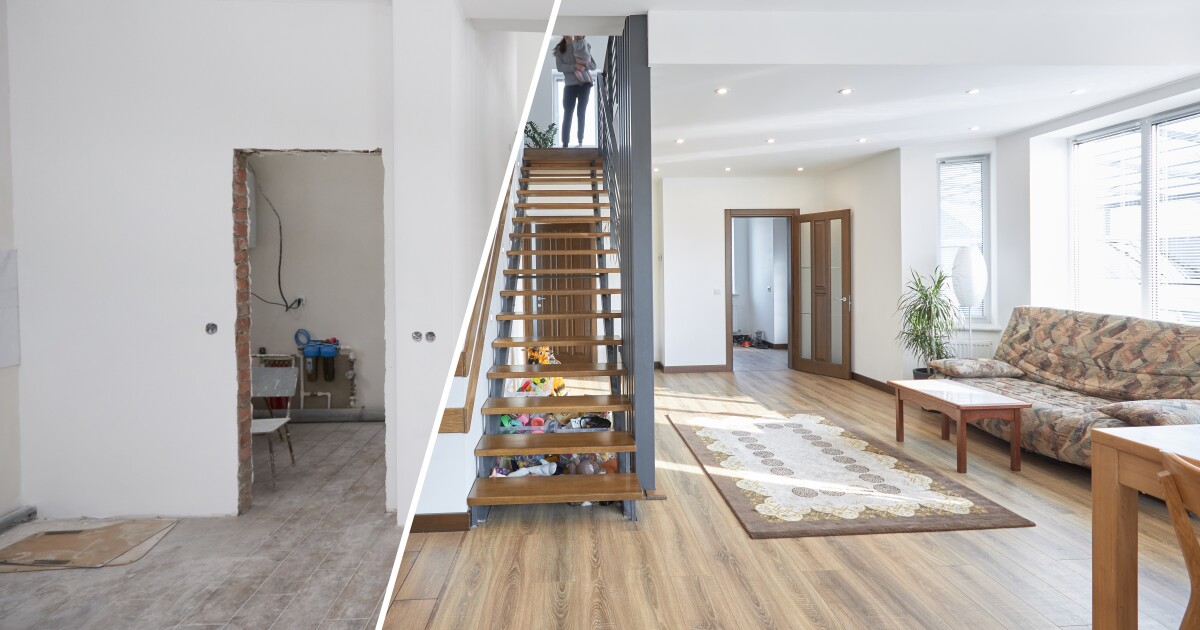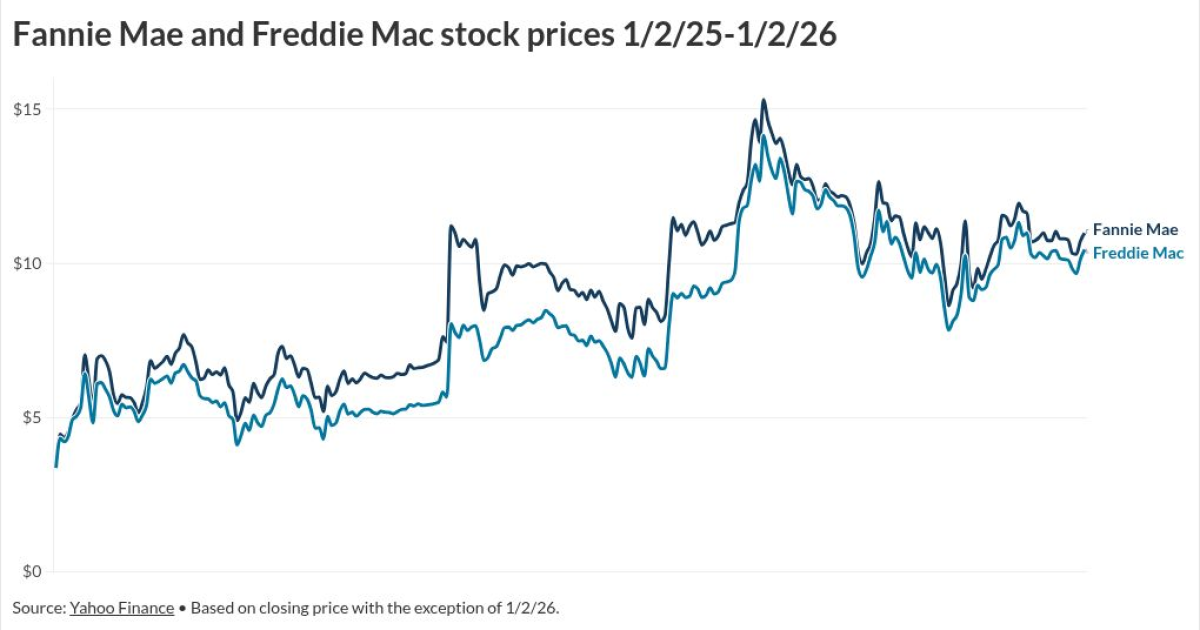
For lenders, the changes recently announced
If anything, use of this renovation and rehabilitation product has fallen behind conforming offerings, as well as similar loans from other government agencies, said Jeff Leinan, co-president of Plaza Home Mortgage.
"A lot of renovation is being done with these other products, but you have to have conventional credit reserves and [the debt-to-income ratios]," added James Bobb, vice president, national renovation lending at Planet Home Lending. "So this is really going to help
The last changes
Through July 31, FHA had endorsed 3,091 203(k) in the current federal fiscal year, which started on Oct. 1, 2023. When this fiscal year ends, it will have the lowest 203(k) production in history, Bobb predicted.
"Part of that challenge has also come from the fact that we've gone from
"The consultant plays a guiding role throughout the rehabilitation process, acting as the liaison between the homeowner, contractor(s), and lender," an FHA document said. "The consultant inspects the property and prepares a feasibility study, architectural exhibits, work write-ups, cost estimates, draws request inspections, and change orders; and ensures that all work is performed in compliance with FHA requirements."
Changes in the consultant fee and the fact that it can be financed in the limited program will help to bring those numbers up and expand use in the unserved and underserved areas, Bobb said. That also makes it more competitive with the conventional programs that do not mandate the use of a consultant, whereas it is required for the Standard version and optional for the Limited.
Under the revised fee schedule, the consultant can be paid on a sliding scale based on the value of the repairs from as little as $1,000 for those less than or equal to $50,000 up to 1% or $2,000, whichever is lower for repairs over $140,000. Previously, the base fee ranged from $400 to $1,000.
A draw inspection fee now has a maximum of $375, while the same amount can be charged for a feasibility study prior to the work being done.
Besides the mandatory use of the consultant and that the fees already could be financed, the Standard 203(k) requires a minimum of $5,000 in eligible repairs. Standard FHA property requirements apply. The paperwork requirements are also more detailed, such as a required work write-up from the consultant.
The Limited version is also known as the Streamline 203(k). It can only be used for minor remodeling and nonstructural repairs and under the changes, the limit is increasing to $75,000 from $35,000.
Last fiscal year, FHA endorsed 4,034 mortgages for this program, while in fiscal year 2022, endorsements totaled 4,801.
In particular, lenders will focus on the benefits of the expanded 203(k) Limited Product, which allows for a speedier process, said Rola Gurrieri, chief fulfillment officer at Rate, the recently rebranded Chicago-based lender.
"Lenders prefer the Limited product for its easier underwriting and faster closing times compared to the Standard 203(k)," Gurrieri said. "With this in mind, I believe they will emphasize the increase from $35,000 to $75,000 in their promotions to clients and referral partners."
With that increase in the Limited program, "you're going to be able to get at least $60,000 worth of work, maybe upwards of $65,000 worth of work, done to a home," said Bobb. "That is a huge help to a lot of inventory that really needs work."
As for Rate, it plans to make "marketing changes along with educating sales and consumers on how this change makes it easier to purchase a property in need of repair," Gurrieri said.
All the changes, especially ones involving program consultants, such as revising the fee schedule and allowing those to be part of the financing will make the program more beneficial, said Leinan.
"Obviously we've seen a lot of inflation in the last three or four years," Leinan said. The costs of "construction materials and construction in general has certainly been a part of that, if not leading the way in some areas."
Being a first-time home buyer purchasing a property that needs rehabilitation can be overwhelming, and using a consultant even in the Limited program can alleviate that feeling, said Bobb.
"Prudent lenders will be using the flexibility to finance a consultant where it makes sense to protect the consumer and protect the lender from risk," Bobb said. "So that's a very good flexibility they gave us; it can't be understated."
Plaza has been a supporter of the renovation product set for some time.
"Occasionally, we will go with mortgage brokers to Realtor events so that they understand the impact of financing for renovation products and how it can help people sell homes," Leinan said.
It is not just something lenders can offer as a refi product, and in fact, Plaza has doubled its percentage of all renovation originations across investor types. It can also be used to provide financing on properties that, because of their physical condition, might not be able to be lent upon, he noted.
Another reason for originators to sell a borrower on considering a 203(k) loan is to allow "people to make improvements to get a home the way they would like it, in an environment where there's not always great inventory available," a situation still true even with the increase in listings, Leinan said.
The inventory shortage is likely behind the increase in use for refis as well, giving people the opportunity to finance the repairs at a lower interest rate than their credit cards if the person carries a balance, he explained.
Bobb agreed, noting that the recent drops in
"Every lender should have this product, and the full suite of renovation products quite frankly, because it will help their loan officers, more importantly help their customers access to properties that need to be fixed up," Bobb said. "I have a saying, there's plenty of inventory in this country, it's just not up to date, it's just not move-in ready." Renovation programs open up a huge amount of inventory, which is fantastic for buyers, he added.
The government-sponsored enterprises have renovation product options, as do the Veterans Affairs and U.S. Department of Agriculture programs.
"Given the mortgage market not being as robust as many would like right now, I think that it's the opportunity for originators to really dive into the needs of borrowers and maybe undertake a loan program like this that maybe they haven't done before, or that may be perceived as a little more difficult when it really isn't," said Leinan. "But I think it's a good opportunity, and lots of borrowers think it really helps them solve a lot of their own problems."
These reasons are likely behind the increase in conversations Plaza is having with its mortgage brokers about doing these renovation loans, Leinan said.
"More and more brokers are really understanding that these are great solutions, and they're a great value add to the real estate community, and it's a good thing to help them get in front of real estate brokers and help solve their needs and add value to them," Leinan said.
Bobb will be speaking at some upcoming industry conferences about the changes.
"The industry needs to get ready, so we'll be doing social media, we'll be doing internal and external communications," Bobb continued. "We'll be doing training, and we'll be writing newsletters, and on the retail side, we'll have some collateral materials and marketing campaigns."
The real estate sales community is going through its own existential crisis right now,
From his perspective at JW Surety Bonds, which provides that service to mortgage brokers, Eric Weisbrot, chief marketing officer, said the emphasis originators will make to consumers will be on its accessibility and appeal.
"We're hearing that marketing will focus primarily on educating borrowers about the ability to finance the purchase and renovation of a home with just one loan," Weisbrot said. "We imagine seeing a spike in homeowner success stories featuring fixer-uppers transformed into dream homes."
The changes make the program more broadly available to borrowers. "We expect higher application volumes as borrowers recognize the benefits of consolidating purchase and renovation financing into one convenient loan," said Weisbrot.
Originators, if they are not already, should be collaborating with contractors and real estate agents to grow networks that will assist borrowers during the renovation process. "By offering comprehensive support throughout the process, lenders are hoping to make the program more understandable and appealing," Weisbrot said.
Until now, the inflow of 203(k) loans has been slow at
"I think from an originators perspective, partnering with third party processing, or the right lenders, or lender [account executives], could definitely make the process a lot smoother for them and their borrower," said Zabrina Suero, director of operations at Wemlo. "So with the recent changes that we see have happened, I'm really hoping that we do start to get a better influx of the loans, because our team is trained and they're prepared to process it effectively."
People want to own homes, but given where prices are, especially in some markets like her native South Florida, it has become difficult.
Properties available for renovation are generally cheaper and several people interviewed noted they could help to mitigate the inventory shortage.
Homebuyers want to stay in familiar neighborhoods and a program like the 203(k) adds to the number of affordable properties available, Suero said.
These program changes provide people with more possibilities for rehabbing properties making it more desirable as a loan option, Suero noted. For example, her generation, the millennials are looking to fix potential purchases "to our esthetic. That can also be a factor making the program more attractive."
Choosing a lender that has familiarity and experience with the program can make the process a lot smoother. The same is true for the vendor the originator works with.
"Our team is trained to do them," Suero said. "It's a matter of receiving them on a more consistent basis."



